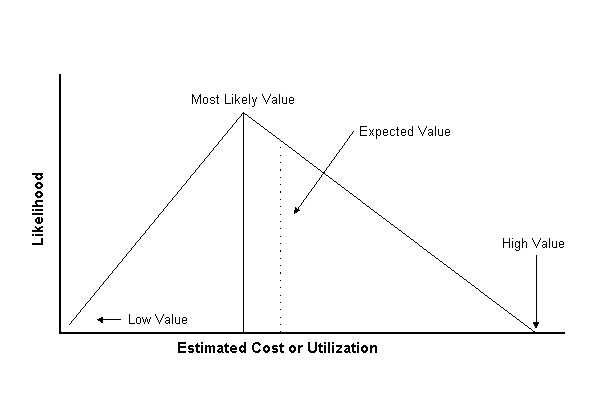Does budgeting your upcoming project feel like uncharted territory? Using analogous estimating could be the trusted compass you need, a top-down approach derived from similar past projects.
This blog will walk you through how to leverage this method for a realistic and accurate preliminary cost estimate that fits within your resources. Ready to navigate towards efficient budgeting?
Key Takeaways
- Analogous estimating is a cost estimation technique that uses historical data from previous projects to estimate the costs of a current project. It helps with fast cost estimation when there are limited details and resources available.
- Analogous estimating has advantages, including being quick, easy to understand, and useful in the early stages of a project. It also saves time by using past data and provides insights for accurate budget estimates.
- However, there are some disadvantages to consider when using analogous estimating, such as limited accuracy, reliance on historical data that may not be comparable, lack of detail or flexibility, subjectivity in interpretation, and inefficiency for complex projects.
- To employ analogous estimating effectively for better budgeting, gather inputs such as project parameters and historical data. Analyze and compare them to previous projects using quantitative techniques like single-point or ratio estimates. Use outputs such as rough estimations and cost breakdowns to guide resource allocation and decision-making throughout the budgeting process.
Understanding Analogous Estimating

Analogous estimating is a cost estimation technique that involves using historical data from previous projects to estimate the costs of a current project.
Definition
Analogous estimating is a tool used in project management. This method lets you know how much a task might cost or how long it might take. It works by looking at data from similar tasks done in the past.
Project managers use this top-down method to make fast yet useful guesses about future projects. To do this well, they need skill and experience but when done right, it improves budgeting by using facts from past work.
Uses
Analogous estimating has many uses in project management and budgeting.
- It helps with fast cost estimation when you do not have a lot of details.
- It uses information from past projects to guess the cost for new ones.
- If you are short on time or resources, this method is great.
- This tool lets project managers see how similar projects did in the past.
- Using Analogous estimating, you can avoid big mistakes because you learn from past success or failure.
- You can get a rough idea of cost at the start of a project to help make decisions.
- This approach improves overall budget planning and control by looking at previous data for guidance.
- Even when little detailed data is available, it provides useful insights for early budget estimates.
- With this technique, simple or complex projects can be estimated accurately using expert judgment based on historical data comparisons.
- By implementing analogous estimating in budgeting, the accuracy of predictions can be enhanced, improving strategic financial planning within organizations.
Advantages
Analogous estimating has many benefits. The method is easy to use. It saves time by using data from past projects. This even helps when there’s not much detail about the new project yet. Project managers can find a fast cost for their project with this approach.
| Advantage | Description |
|---|---|
| Efficient | Analogous estimating is quick and does not need much data. |
| User-Friendly | It is simple to understand, so it’s easy to explain to teams. |
| Helps in Early Stages | This method works best when a project is still in its starting phase. |
| Uses Expert Knowledge | Past experiences help make better guesses for new projects. |
| Cheap | Since it uses past data, it does not cost much money. |
Disadvantages
Analogous estimating has some disadvantages that project managers should be aware of:
| Disadvantage | Description |
|---|---|
| Limited Accuracy | Analogous estimating provides a rough estimate and may not be as accurate as other estimation techniques, especially when projects have unique characteristics. |
| Reliance on Historical Data | Analogous estimating relies heavily on historical data from similar projects. If the past projects used for comparison are not truly comparable, the estimates may be misleading. |
| Lack of Detail | This technique does not account for specific project details or changes in scope, which can lead to inaccurate cost estimations. |
| Subjectivity | Analogous estimating involves relying on expert judgment and subjective interpretation of historical data, making it prone to bias and varying interpretations. |
| Inability to Capture Nuances | Since analogous estimation is based on high-level comparisons, it may not capture the nuances of specific project requirements or conditions. |
| Dependency on Available Data | The accuracy of analogous estimates is dependent on the availability and quality of historical data. If there is limited or incomplete information, the estimates may be less reliable. |
| Inefficiency for Complex Projects | Analogous estimating works best for simple or well-defined projects with similar parameters. For more complex projects with multiple variables, this technique may not provide sufficient accuracy. |
| Lack of Flexibility | Once an estimate is made using analogous estimating, it can be challenging to adjust or modify as the project progresses and more information becomes available. |
Types of Analogous Estimates

There are three types of analogous estimates: single-point estimate, ratio estimate, and three-point estimate. Each type offers a unique approach to estimating project costs and resources.
Read on to learn more about these estimation techniques and how they can improve your budgeting process.
Single-point estimate
A single-point estimate is a type of analogous estimating where a project’s cost is estimated using one specific value. It involves looking at similar past projects and selecting a cost that closely matches the current project.
This estimation technique provides a quick and simple way to determine the budget for a project when there is limited information available. By analyzing historical data and comparing it to the current project, project managers can make an educated guess about how much it will cost.
The single-point estimate helps in getting an initial idea of the overall project cost without going into too much detail or complexity.
By using this method, technology professionals can quickly estimate how much money they need for their projects by relying on previous experiences. However, it’s important to note that this approach may not provide precise accuracy since it relies on assumptions based on past projects.
Ratio estimate
Ratio estimate is a type of analogous estimating that uses historical data from previous projects to establish a cost estimate based on a ratio or relationship between project parameters.
This technique involves identifying specific project characteristics, such as size, duration, or effort, and comparing them to similar projects to determine the cost. By using this quantitative technique and analyzing past data, project managers can quickly estimate the budget for their current project.
Ratio estimating provides a rough order of magnitude estimate at the beginning stages of a project when little detail is available. It allows project managers to make informed decisions and allocate resources effectively during the budgeting process.
Three-point estimate
The three-point estimate is a technique used in project management to provide a more accurate cost estimation. This method involves considering the best-case scenario, worst-case scenario, and most likely scenario for each project task or activity.
By taking into account these different estimations, project managers can get a better understanding of the potential range of costs involved in a project. The best case, worst case, and most likely scenarios are determined by analyzing historical data from similar projects and using expert judgment.
This approach adds more precision to budgeting and helps project managers plan for contingencies effectively.
How to Employ Analogous Estimating

To employ analogous estimating, gather inputs such as project parameters and historical data, then analyze and compare them to previous projects. Apply quantitative techniques like single-point or ratio estimates to determine the budget for the current project.
Use outputs such as cost breakdowns and rough estimations to guide resource allocation and decision-making throughout the budgeting process.
Inputs
To use analogous estimating for better budgeting, there are certain inputs you need to consider. First, you will need historical data or information from previous projects that are similar to the current one.
This data will help you compare and estimate the cost of the current project based on past experiences. Second, you will need to analyze and evaluate this historical data to identify patterns or trends that can guide your estimation process.
By looking at factors such as project parameters, effort estimation, duration estimation, and cost breakdown from previous projects, you can make more informed estimates for your current project.
Lastly, it is crucial to involve experts or experienced individuals who can provide their judgment and insights based on their familiarity with the projects being compared. Their expertise will add value and accuracy to the estimation process.
In summary, when using analogous estimating for budgeting purposes, it is important to gather relevant historical data from similar projects, analyze this data for patterns and trends, and seek expert judgment during the estimation process.
Outputs
Analogous estimating provides several outputs that can aid in better budgeting for projects. One key output is the rough order of magnitude estimate, which gives an overall cost estimate at the beginning of a project.
This estimate helps project managers get an idea of the potential expenses involved. Another output is the breakdown of costs into smaller components, allowing for a more detailed analysis of where the budget will be allocated.
Additionally, analogous estimating provides quantitative measures and parameters based on past projects, giving project managers insights into how certain factors may impact the budget.
Examples
Analogous estimating can be applied in various scenarios. Here are some examples:
- Estimating the cost of developing a new software application based on the cost of a similar project completed in the past.
- Predicting the effort and duration required to implement an IT infrastructure upgrade by comparing it to a similar project that was executed before.
- Determining the budget for a website redesign project by analyzing historical data from previous website redesigns.
- Estimating the cost of implementing a new technology solution by comparing it to a similar project conducted in another department or organization.
- Predicting the resources needed for developing a mobile app by looking at the resource allocation patterns from previous mobile app development projects.
Differences from Parametric Estimating
Analogous estimating differs from parametric estimating because it relies on comparing projects rather than using mathematical formulas. Parametric estimating uses specific measurements and input variables to calculate estimates, while analogous estimating looks at similar projects and uses historical data as a basis for estimation.
Analogous estimating is a quicker method that provides a rough order of magnitude estimate, while parametric estimating is more precise but requires detailed information and calculations.
Both techniques have their advantages, but analogous estimating is often used when there is limited information or time to perform a detailed analysis.
When to Use Analogous Estimating

Analogous estimating is particularly beneficial in the initial stages of a project, when there is limited estimation resources and little project detail available. It provides a rough estimate based on expert judgment and can be used as a quantitative technique for budgeting.
Read on to learn more about how this method can improve your budgeting process.
Initial stages of project
During the initial stages of a project, analogous estimating can be a valuable technique for budgeting. This method is especially useful when there is limited information available about the project.
By comparing it to similar past projects, project managers can quickly estimate key parameters and measures, such as cost and duration. Analogous estimating provides a rough order of magnitude estimate at the beginning of the project, helping in making early budget decisions.
With this approach, project managers can leverage historical data from similar projects to improve their budgeting accuracy and make informed decisions right from the start.
Limited estimation resources
When project managers have limited estimation resources, analogous estimating can be a valuable technique for budgeting. This approach allows them to quickly estimate project parameters and measures by comparing them to similar projects from the past.
By leveraging historical data and making comparisons, project managers can make rough estimates that provide an idea of the overall cost at the beginning of a project. This is particularly useful when there is little detailed information available or when expert judgment is needed.
With its reliance on past projects, analogous estimating can help overcome resource limitations and improve budgeting accuracy in technology projects.
Little project detail available
When you have little project detail available, analogous estimating can be a helpful technique for budgeting. This approach allows you to estimate the cost of your project by comparing it to similar past projects.
By leveraging historical data and using comparable factors, such as project size or complexity, you can quickly come up with a rough estimate even with limited information. Analogous estimating provides a starting point for budgeting when there are uncertainties or unknowns about the project, allowing you to make informed decisions early on in the planning process.
Need for rough estimate
Rough estimates are important in project management because they give us a quick idea of how much a project might cost. When we’re starting a new project, we often don’t have all the details or data needed to make precise cost calculations.
That’s where rough estimates come in handy. They provide us with a ballpark figure so that we can begin planning and budgeting for the project. By using analogous estimating, which compares the current project with similar past projects, we can quickly get an estimate based on historical data.
These rough estimates help us set expectations and allocate resources effectively at the early stages of a project, before more detailed information becomes available.
For example, if we’re working on developing software for a new product, but we haven’t yet determined all the features or requirements, it would be difficult to come up with an exact cost estimation.
However, by looking at similar software development projects from our company’s past, we can make an educated guess about how much time and money will be needed for this new project.
Expert judgment needed
Analogous estimating relies on the expertise and judgment of experienced professionals. This technique requires project managers to analyze historical data from similar projects and make educated guesses based on their knowledge.
It’s not a straightforward process, as it involves subjective decision-making. The accuracy of the estimation depends heavily on the skill and experience of the person making the judgment calls.
With expert judgment, project managers can enhance budgeting by leveraging past project data and making more informed estimates for a successful outcome.
Conclusion
In conclusion, analogous estimating is a powerful tool for better budgeting in project management. By using historical data from similar projects, project managers can quickly estimate the cost and parameters of a new project.
This top-down approach allows for rough estimations at the beginning of a project and helps improve budget accuracy. With the skill and experience to make accurate estimations, project managers can effectively leverage analogous estimating to enhance their budgeting process.
Frequently Asked Questions
What is analogous estimating?
Analogous estimating is a budgeting technique that uses historical data from similar projects to estimate the cost and duration of a new project.
How does analogous estimating help with better budgeting?
Analogous estimating helps with better budgeting by providing a reference point based on previous projects, allowing for more accurate cost predictions for the current project.
What types of projects can benefit from analogous estimating?
Any type of project, whether it’s construction, software development, or marketing campaigns, can benefit from analogous estimating as long as there are past projects with similar characteristics to use as a basis for estimation.
Is it necessary to have exact matches in order to use analogous estimating?
No, exact matches are not necessary for using analogous estimating. The key is to find previous projects that share similar attributes or parameters that can be used as a benchmark for estimation.
Are there any limitations or risks associated with using analogous estimating?
Yes, there are some limitations and risks associated with using analogues estimatingsuch as potential differences in project scope, technology changes over time, and variations in team expertise which may affect accuracy of estimates. It’s important to consider these factors when applying this technique.



